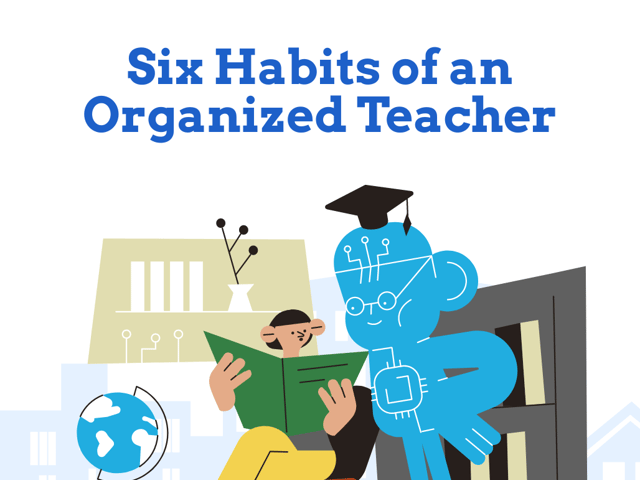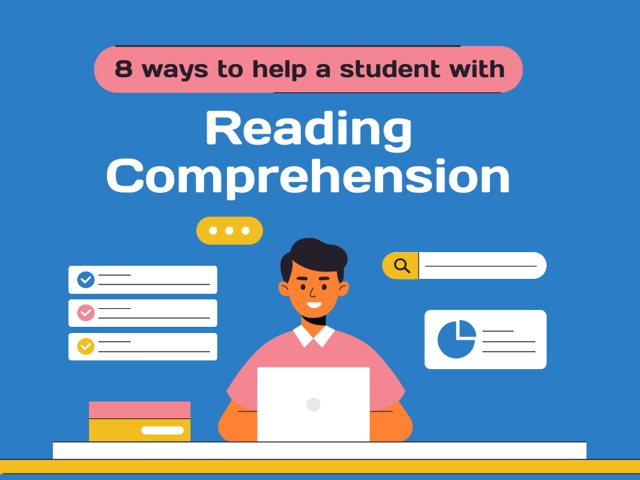
Six Habits of an Organized Teacher
Those who envision education as neat rows of quiet students dutifully working independently with heads bent over their desks have not stepped into a 21st-century classroom. Loud, interactive, and potentially “unruly”, today’s classrooms can seem, at times, like the epitome of chaos. However, as psychiatrist Carl Jung noted, “In all chaos, there is a cosmos, in all disorder a secret order.”
The key is to make sure there is some level of order and organization, even in the midst of the commotion of learning, and the one holding the key to that organization is the teacher.
Why Organization Is Important
Organized teachers help facilitate engaged learners in the discovery of new ideas and information. Though it may look crazy or chaotic, an organized teacher can guide students to meet their learning goals and impart organizational habits to their students that will help empower them to be lifelong learners.
All Organization Does Not Look the Same
First, let it be known that different people and personalities require different levels and types of organization. The key is to find the method or methods that work for you and to get into the habit of using those systems regularly. Even sharing with your students some elements of how you organize things may inspire them to practice some of those same habits in their tasks.
Six Guiding Principles for Teacher Organization
We’ve compiled six habits common to organized teachers that help things run more smoothly in and out of the classroom.
1. Determine Your System
Having an organizational system doesn’t matter if it isn’t something you can commit to doing or doesn’t feel natural. Have an honest conversation with yourself about what kind of organizational habits you can see yourself using and appreciating the value of dedicating time to. Are you a to-do list kind of person? Would you use a day, week, or monthly planner (or all three)? Are you a paper and pretty colored marker kind of person or a digital electronics kind of person? Does color-coding work for you?
Determining the system that will best engage you will increase the chances of you actually using it and incorporating it into your daily life. Ultimately, the purpose of organization is to streamline and make things easier—but it doesn’t help if you can’t find what you’re looking for. There is such a problem as too much of a good thing, so don’t set up a system where you have too many places to look or try to incorporate too many different systems or approaches to juggle.
2. Have a Backup Plan
Organized teachers prepare ahead of time and know what they’re going into when they step into the classroom. They know that nothing contributes to chaos quite like unpreparedness. But things don’t always go according to plan. You may wake up the morning after planning a fantastic lesson the night before and find you have bronchitis and have to call in sick. Having a backup plan and a binder of sub-friendly standby activities will help ensure that things run smoothly in your classroom (as smoothly as they can without you) and help alleviate some of the stress of worrying about what students are doing when you’re not there.
Speaking of subs, it’s a hard job to come into a classroom as a substitute teacher. Unfamiliar with your routines and your students, substitutes can use all the help they can get. That includes subbing for organized teachers who leave important documents like attendance sheets, bell or daily schedules, seating charts, etc. in an easy-to-find place. General lesson plans or activities that can be led by anyone walking into your classroom are also helpful. This might include things like vocabulary bingo word games, math worksheets, short story packets, writing prompts, or art projects.
3. Go Beyond Paper and Supplies
More and more, it seems that student work, assessments, and learning are taking place in digital spaces, so electronic organization is another component to consider. Most of us plan on our computers or devices, saving, downloading, and sharing materials with others. This can cause electronic desktops to become cluttered, and our reliance on email to correspond with colleagues, administration, and parents can lead to overflowing inboxes.
Develop a system to keep your computer files and email correspondence clean and tidy; this might be checking email first (or last) thing in the day, using folders and subfolders to organize groups or individuals with whom you correspond, and including dates in your file names.
4. Develop Behavioral Patterns
Consistency is key to organization. Developing patterns of behavior, like always putting your car keys in the same place on your dresser or packing your bag for school the night before, can take time to really become habit, so keep this in mind as you start new behaviors. And remember that not all of the behaviors have to be done by you. In fact, soliciting your students and helping them develop patterns of behavior will bring a whole new level of organization to your classroom.
Set patterns as to how you will distribute or collect papers or homework. Maybe there’s a designated student whose job it is to do that. Maybe tables gather their homework into one pile and a representative takes it to the basket. When it’s time to get or put away books or supplies, 40 bodies all moving at the same time can lead to disaster. How can that task be completed to cut down on the chaos and the potential for injury?
Delegate to students whenever possible to help give them a sense of empowerment in their educational environment. Included in that would be the implementation of habits to help students settle down and prepare for the lesson; an independent journal entry, meditative breathing, or some other mindfulness activity.
Organized teachers also consider how to move students from one activity to another and how to transition between lessons with the least disruption possible. Students will come to navigate through the classroom on “autopilot” without having to think about where they turn in late work or where they can find blank paper if they need it. These behaviors become habits for everyone and lead to a smoother-running classroom.
5. Manage the Paper Load
One huge area where organization can really make a difference is in managing the paper load of student work and assignments. It’s easy to get overwhelmed by 190 essays coming in or class sets of writing activities and math worksheets and science projects. Grading and giving meaningful and timely feedback requires an organized teacher.
Set time each day for grading and set a timer to keep you to that time. If you notice it’s taking you more time than you are allotting (and you think you allotted enough to start with), consider ways to speed up your review of papers. Using a stamp, grading with a rubric, minimizing comments, or using shorthand abbreviations to note issues (providing students with a key to those, of course!) can help speed up grading and allow teachers to get through more content in less time.
Sometimes it’s just the number of papers that is overwhelming! Organized teachers employ methods like using color-coded folders to keep class periods or content separate or assigning students digital folders or portfolios to keep their work organized online. Depending on your teaching assignment and access to technology, there are many ideas out there for managing student work.
6. Collaborate and Brainstorm with Other Professionals
Educators are some of the most creative thinkers around. Discuss your organizational challenges with your colleagues (either at your school site or online with educators from around the world on many different platforms) and hear their ideas for how to handle the challenge. Visit colleagues’ classrooms to get a look at how they organize and structure their teaching space. Take those ideas and determine what might work (or definitely wouldn’t work) for you and how you might adapt them for your needs.
Using Organization to Help Students
As you begin to implement some new organizational practices, remember that organization isn’t that strict classroom with straight rows of desks. Learning is messy, learning is loud, learning is cooperative, and teachers must be flexible. Organizing your classroom and establishing new routines with your students to help manage classroom time and activities will not only help you feel more in control, but it will help empower your students with habits they can apply outside your classroom to also be more organized themselves.
Whether you’re a seasoned teacher or an aspiring teacher studying for the GACE, things will sometimes feel disorganized. Things will get chaotic. But having some basic strategies for maintaining organization and structure will help you let some of the stress go and allow you to be more present for your students.

Keep Reading

Georgia Assessments for the Certification of Educators Blog
How to Help Students Become Independent Learners
As educators, our number one goal is to help students become independen…

Georgia Assessments for the Certification of Educators Blog
How to Help a Student with Reading Comprehension
Many readers take for granted the ability to read and understand a text…

Georgia Assessments for the Certification of Educators Blog
Nine Qualities of a Good Teacher
Teachers wear many hats each day. They are instructor, coach, cheerlead…